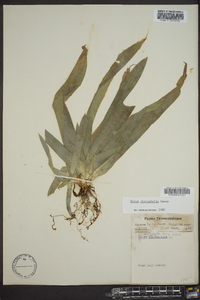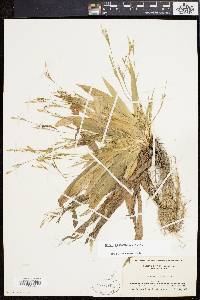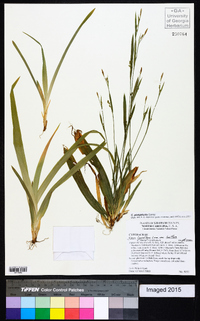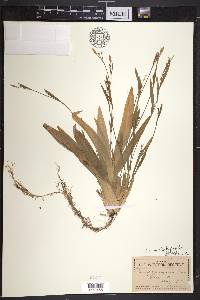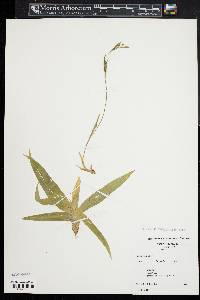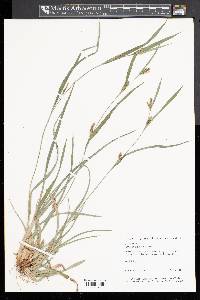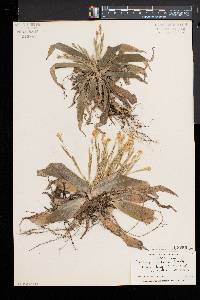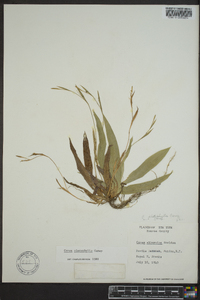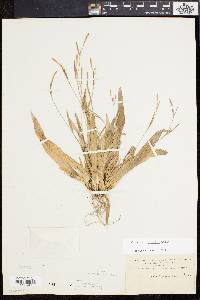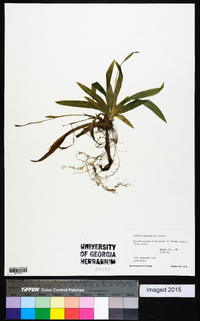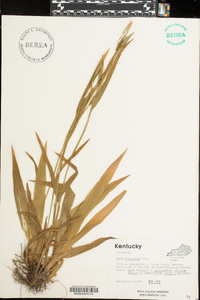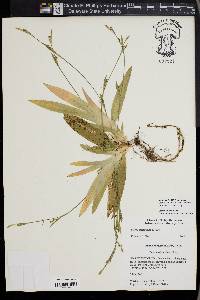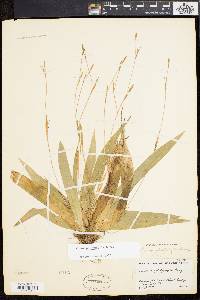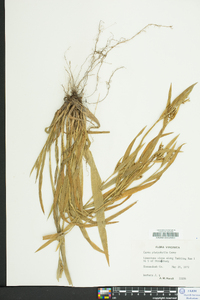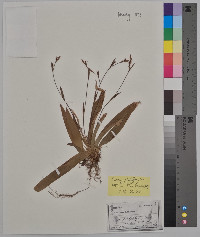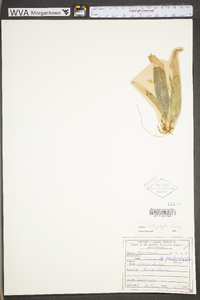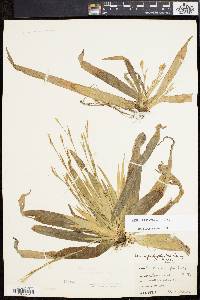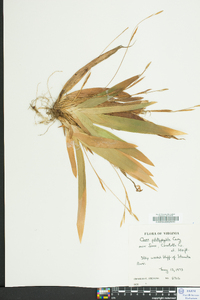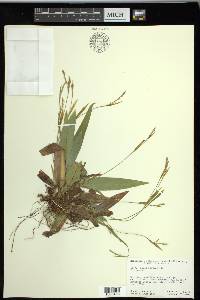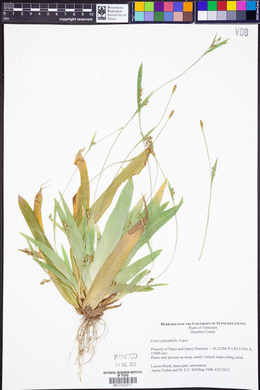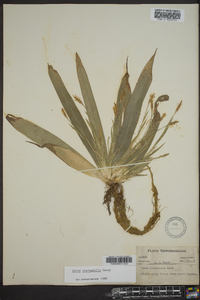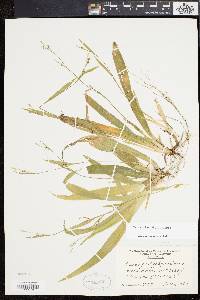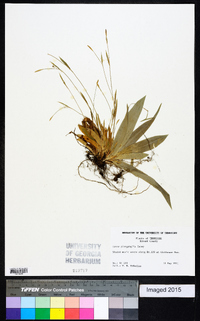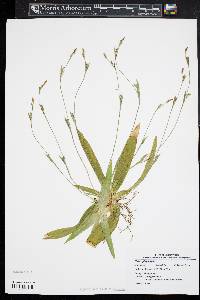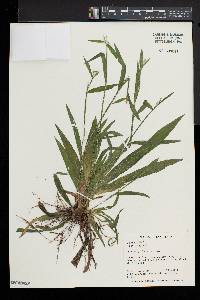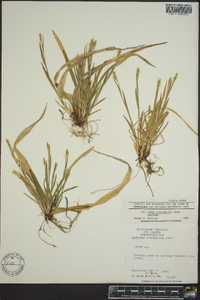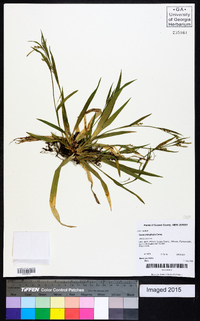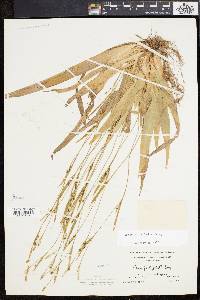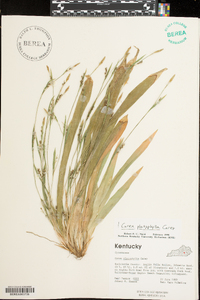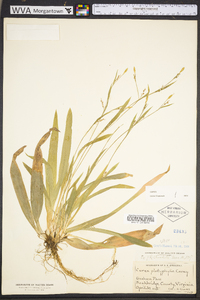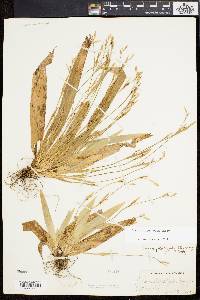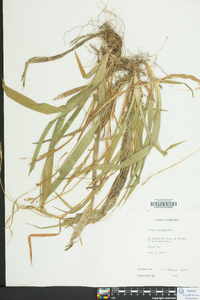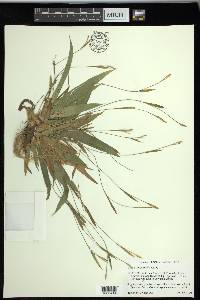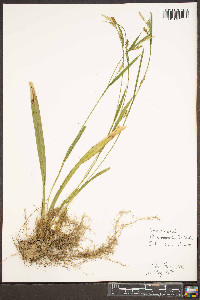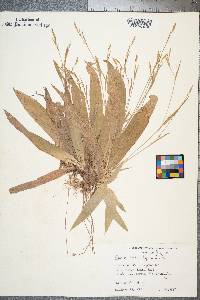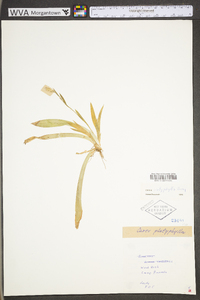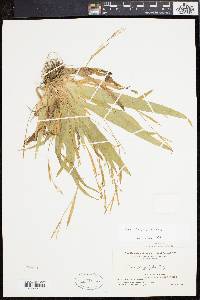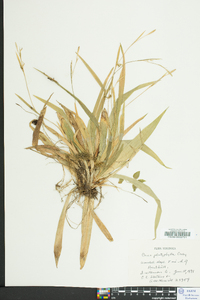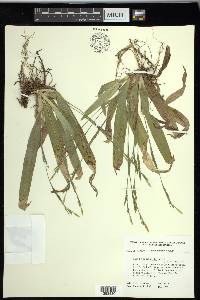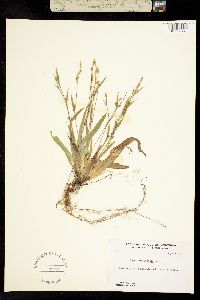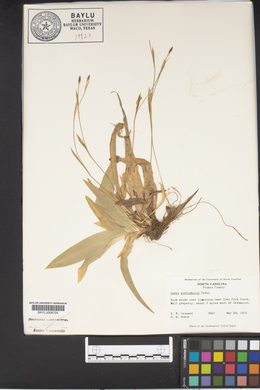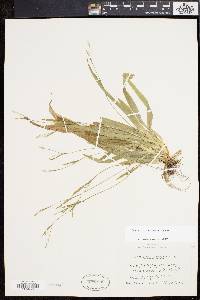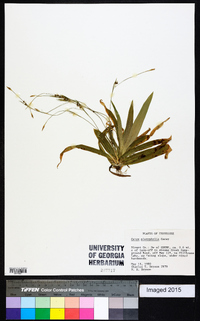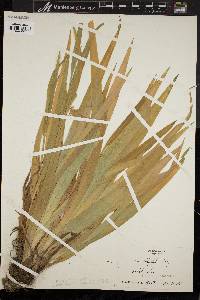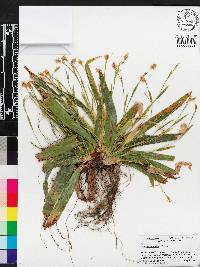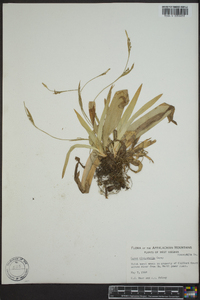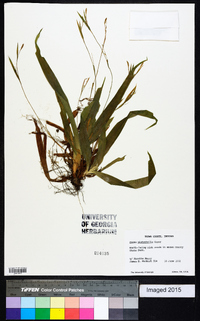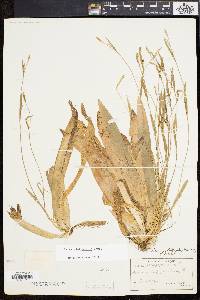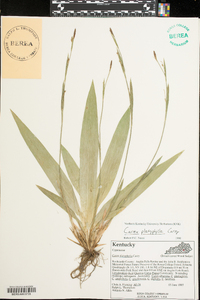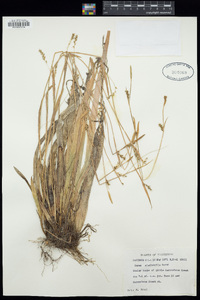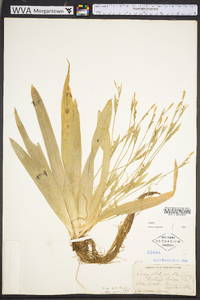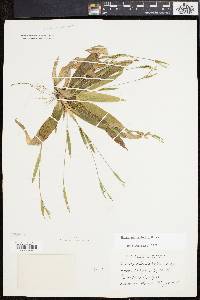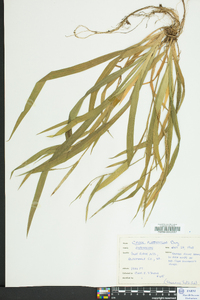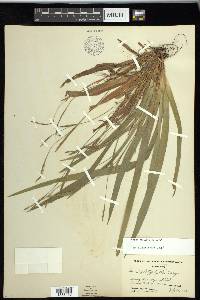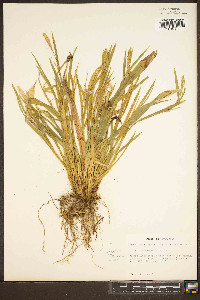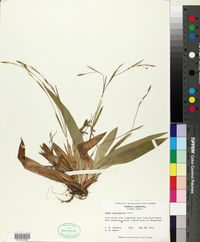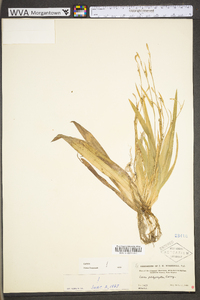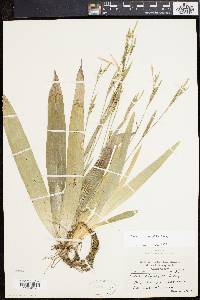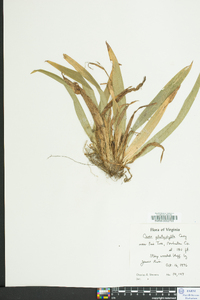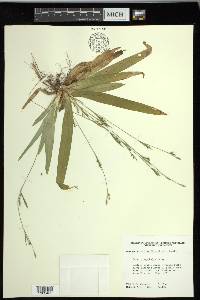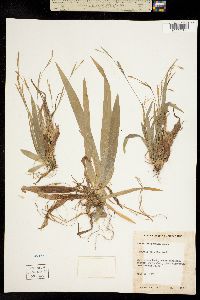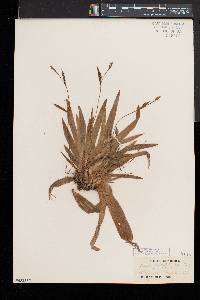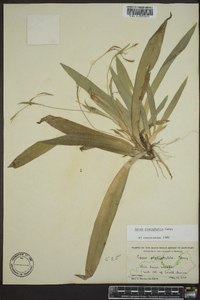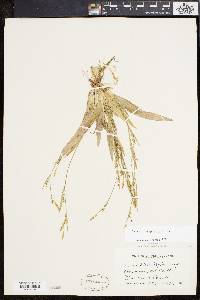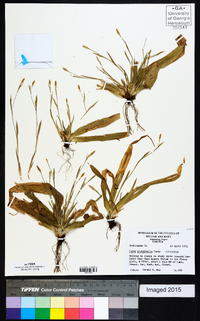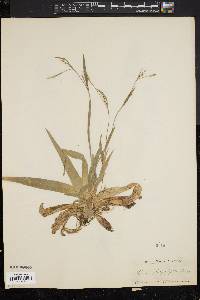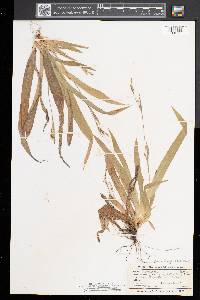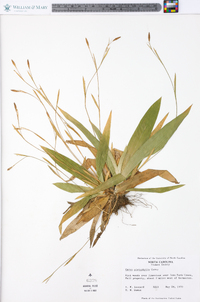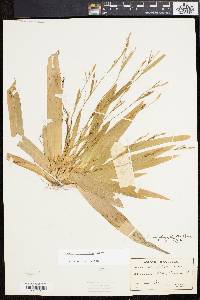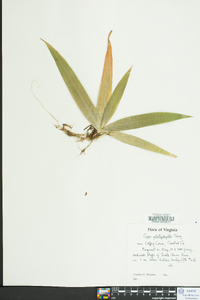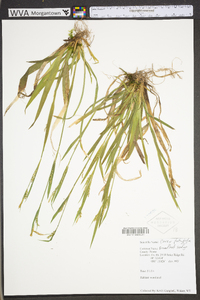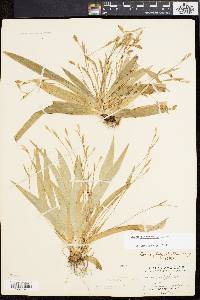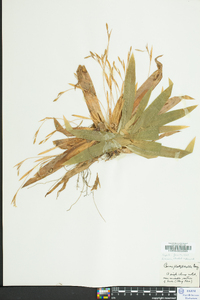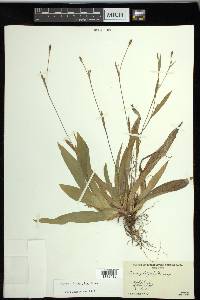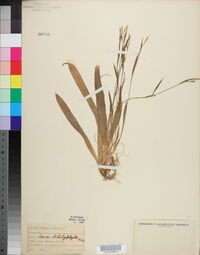Carex platyphylla
|
|
|
|
Family: Cyperaceae
Broad-Leaf Sedge
|
Plants densely cespitose. Culms lateral, ascending, lax, or decumbent, very slender, 14-38 cm × 0.2-0.5 mm. Leaves: basal sheaths white or light brown; sheaths green, lighter to white at base, 1-22 mm; blades erect, ascending, or lax, grayish blue-green, midrib strongly developed, 2 lateral veins developed, 5-22 cm × (7-)11-28 mm, older leaves shriveling or dead at tips. Inflorescences: spikes (2-)3(-4) per culm, scattered; peduncles of pistillate spikes exserted 0-2.2 cm; of staminate spikes 0.1-0.8 cm; bracts from middle and proximal portions of culms 1.4-5.2 cm × 2-6 mm. Pistillate spikes: the proximal basal, erect, 6-16 × 2.8-3.8 mm. Staminate spike 1, linear-clavate, 6-14 × 2-4 mm. Pistillate scales keeled, 3-6 × 1.8-2.2 mm, midribs green, margins hyaline or brown tinged outward, apex apicluate or aristate, awn to 2 mm. Staminate scales obovate, 2.7-5 × 1.8-2.2 mm, midribs green, margins hyaline and brownish to purple tinged outward, apex obtuse to acute. Anthers 3.3-4 mm. Perigynia 2-9 per spike, overlapping, ascending, finely many-veined, obovoid, 3-3.2 × 1.8-2 mm; beak short curved. Achenes ovoid, 2.8-3 × 1.6-1.8 mm, slightly concave at maturity, tightly fitting in perigynia. Style ascending through entire orifice. 2n = 68, 70, n = 32 + (3), 33 + (3), 33 + (4). Fruiting spring. Rich, moist deciduous forests, on rocky or gravelly slopes, soils above limestone, shale, or calcareous metamorphic rocks, often on clay soils; 100-1100 m; N.B., Ont., Que.; Conn., Del., D.C., Ind., Ky., Maine, Md., Mass., Mich., N.H., N.J., N.Y., N.C., Ohio, Pa., R.I., Tenn., Vt., Va., W.Va., Wis. Tufted, 2-4 dm, the fertile stems lateral, roughened on the angles; basal sheaths white or light brown; lvs smooth, somewhat glaucous, those of the sterile shoots 10-25 mm wide, of the fertile shoots 2-6 mm wide; terminal spike staminate, 0.6-1.5 cm, on a peduncle 1-8 mm; pistillate spikes 2-4, 0.6-1.5 cm, scattered, the lowest one basal; pistillate scales apiculate or with an awn to 2 mm; perigynia 2-9, overlapping, 3-4.5 mm, finely many-nerved as well as 2-ribbed, sharply trigonous, elliptic in outline, rather abruptly contracted to the short, erect or outcurved beak with entire orifice; achene sharply trigonous; 2n=68, 70. Woods; Me. and s. Que. to Va. and in the mts. to N.C., w. to Wis. and Mo. Gleason, Henry A. & Cronquist, Arthur J. 1991. Manual of vascular plants of northeastern United States and adjacent Canada. lxxv + 910 pp. ©The New York Botanical Garden. All rights reserved. Used by permission. From Flora of Indiana (1940) by Charles C. Deam All the Indiana collections of this species are from the knob area (Chestnut Oak Upland) with the exception of a single collection from Vigo County and one from Putnam County. It is found in calcareous soils on dry open woodland slopes. No specimen could be found to confirm Bradner's report from Steuben County, but the occurrence of the species in the northern counties is not improbable since it is known from southern Michigan. ...... Indiana Coefficient of Conservatism: C = 10 Wetland Indicator Status: n/a |

![Plant base [J. Sturner JS847 (MOR)] - The Morton Arboretum, West Side; DuPage Co., IL Carex platyphylla image](http://carex.lifedesks.org/image/view/111)
![Habit, field [J. Sturner JS847 (MOR)] - The Morton Arboretum, West Side; DuPage Co., IL Carex platyphylla image](/imglib/h_seinet/seinet/misc/201403/imgid-318261_tn.jpg)
![Ligule [J. Sturner JS847 (MOR)] - The Morton Arboretum, West Side; DuPage Co., IL Carex platyphylla image](/imglib/h_seinet/seinet/misc/201403/imgid-318260_tn.jpg)
